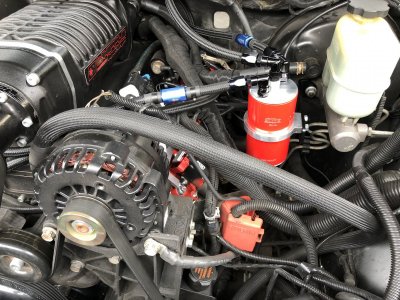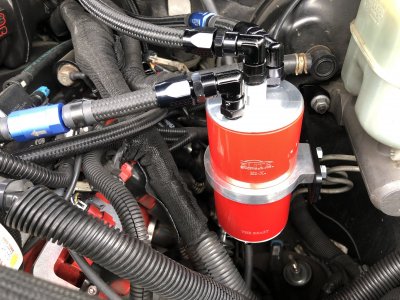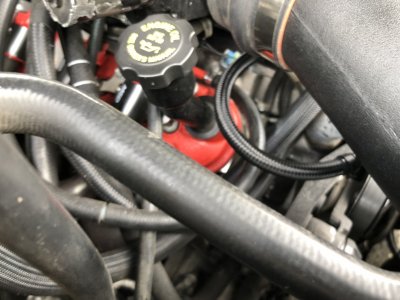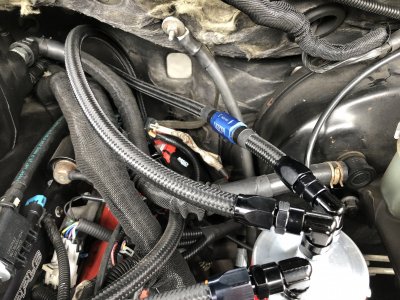Rocket Man's 02 Denali Build Thread AKA "THE BEAST"
- Thread starter Rocket Man
- Start date
Disclaimer: Links on this page pointing to Amazon, eBay and other sites may include affiliate code. If you click them and make a purchase, we may earn a small commission.
PG01
Supporting Member
Any kind of link-age please?The plastic chrome edges on the ‘15 style fobs bothered me so I ordered all black housings off EBay for about $8 each and was pleasantly surprised that those edge parts are metal on these. Plus no logo on the back. Plus did I say NOT chrome lol.
View attachment 230510 View attachment 230511 View attachment 230512
(Asking for a link to fobs....asking for a friend)
Fobs are $39.95 from Boost Auto https://boostautoparts.com/products/fobAny kind of link-age please?
(Asking for a link to fobs....asking for a friend)
Housings are $9.33 on EBay https://rover.ebay.com/rover/0/0/0?mpre=https://www.ebay.com/ulk/itm/292260139030
After further research on the clean side separator I found this on Elite Engineering’s website:
Although app. 90-95% of the oil ingestion via the intake air charge enters via the "Dirty" or "foul" side of the PCV system, the other 5-10% enter via back flow through the factory "clean" or "fresh" side tube. This occurs mainly when accelerating or at wide open throttle when intake manifold vacuum drops to zero and crankcase pressure is allowed to build. This pressure will seek the path of least resistance, which is backwards flowing into the intake air bridge assembly bringing in oil mist and other contaminants into the intake air charge. While this will not cause severe issue with a port injection daily driven engine, it will cause detonation and reduced power and fuel economy, and in a performance engine, especially forced induction, this detonation is detrimental to power and the resulting knock retard is a negative tuners and owners should avoid, especially if the engine is run hard for extended periods such as road racing, drag racing, or aggressive driving period.
I also figured out how to install it by hitting up some forums and YouTube. There is a hose going from the passenger valve cover to the TB which actually connects to the CAI side of it, not the engine intake side like I thought. It’s just like connecting to the CAI tube like other instructions show. I just removed the hose from the valve cover, plugged the port on the valve cover with the supplied rubber cap, and connected the hose to the CSS. So instead of drawing air into the valve cover directly it goes through the CSS instead which traps any oil during vacuum and then releases it afterward into the oil fill hole. I didn’t have enough braided line included in the kit (wth) to use on this so I have some on order. I’ll replace the rubber hose when that comes in. The CSS installs in place of the oil filler cap by screwing its base on, then it just shoves down and has o-rings to seal it. It will make changing or adding oil a bit easier since you just pull up to remove it , no unscrewing. Oh and yes I will be painting my TB again, of finding a prettier one like a FAST billet one.
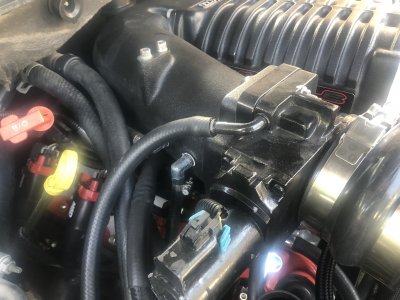
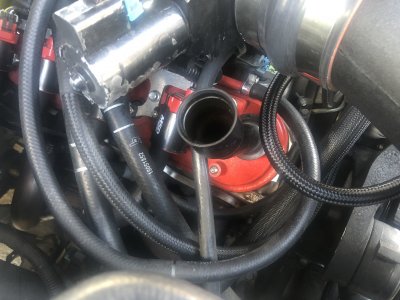
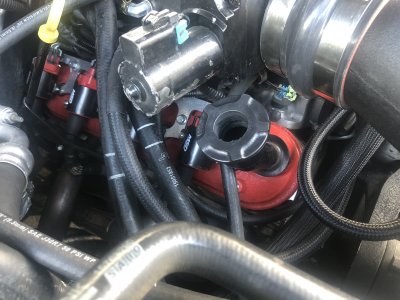
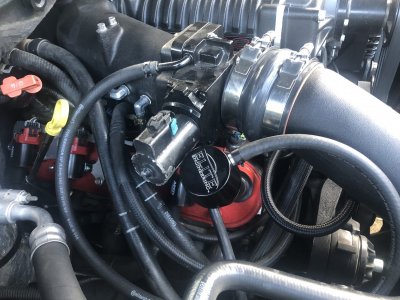
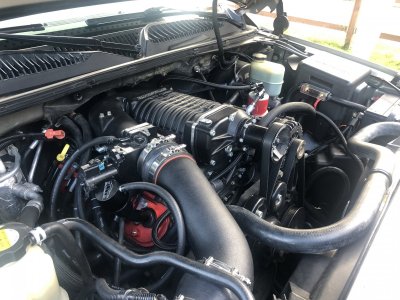
Although app. 90-95% of the oil ingestion via the intake air charge enters via the "Dirty" or "foul" side of the PCV system, the other 5-10% enter via back flow through the factory "clean" or "fresh" side tube. This occurs mainly when accelerating or at wide open throttle when intake manifold vacuum drops to zero and crankcase pressure is allowed to build. This pressure will seek the path of least resistance, which is backwards flowing into the intake air bridge assembly bringing in oil mist and other contaminants into the intake air charge. While this will not cause severe issue with a port injection daily driven engine, it will cause detonation and reduced power and fuel economy, and in a performance engine, especially forced induction, this detonation is detrimental to power and the resulting knock retard is a negative tuners and owners should avoid, especially if the engine is run hard for extended periods such as road racing, drag racing, or aggressive driving period.
I also figured out how to install it by hitting up some forums and YouTube. There is a hose going from the passenger valve cover to the TB which actually connects to the CAI side of it, not the engine intake side like I thought. It’s just like connecting to the CAI tube like other instructions show. I just removed the hose from the valve cover, plugged the port on the valve cover with the supplied rubber cap, and connected the hose to the CSS. So instead of drawing air into the valve cover directly it goes through the CSS instead which traps any oil during vacuum and then releases it afterward into the oil fill hole. I didn’t have enough braided line included in the kit (wth) to use on this so I have some on order. I’ll replace the rubber hose when that comes in. The CSS installs in place of the oil filler cap by screwing its base on, then it just shoves down and has o-rings to seal it. It will make changing or adding oil a bit easier since you just pull up to remove it , no unscrewing. Oh and yes I will be painting my TB again, of finding a prettier one like a FAST billet one.





Tonyrodz
Resident Resident
Would it be possible to use a 1 way valve to use on that side? So during hard driving nothing could be sucked back into the clean side?After further research on the clean side separator I found this on Elite Engineering’s website:
Although app. 90-95% of the oil ingestion via the intake air charge enters via the "Dirty" or "foul" side of the PCV system, the other 5-10% enter via back flow through the factory "clean" or "fresh" side tube. This occurs mainly when accelerating or at wide open throttle when intake manifold vacuum drops to zero and crankcase pressure is allowed to build. This pressure will seek the path of least resistance, which is backwards flowing into the intake air bridge assembly bringing in oil mist and other contaminants into the intake air charge. While this will not cause severe issue with a port injection daily driven engine, it will cause detonation and reduced power and fuel economy, and in a performance engine, especially forced induction, this detonation is detrimental to power and the resulting knock retard is a negative tuners and owners should avoid, especially if the engine is run hard for extended periods such as road racing, drag racing, or aggressive driving period.
I also figured out how to install it by hitting up some forums and YouTube. There is a hose going from the passenger valve cover to the TB which actually connects to the CAI side of it, not the engine intake side like I thought. It’s just like connecting to the CAI tube like other instructions show. I just removed the hose from the valve cover, plugged the port on the valve cover with the supplied rubber cap, and connected the hose to the CSS. So instead of drawing air into the valve cover directly it goes through the CSS instead which traps any oil during vacuum and then releases it afterward into the oil fill hole. I didn’t have enough braided line included in the kit (wth) to use on this so I have some on order. I’ll replace the rubber hose when that comes in. The CSS installs in place of the oil filler cap by screwing its base on, then it just shoves down and has o-rings to seal it. It will make changing or adding oil a bit easier since you just pull up to remove it , no unscrewing. Oh and yes I will be painting my TB again, of finding a prettier one like a FAST billet one.
View attachment 230640 View attachment 230641 View attachment 230642 View attachment 230643 View attachment 230644
iamdub
Full Access Member
Starting to look like a 70s smog-era engine under there. 

Would it be possible to use a 1 way valve to use on that side? So during hard driving nothing could be sucked back into the clean side?
It doesn’t need one. There’s 2 of them on the catchcan outlets though. I’m sure if the CSS needed one, Elite or any of the others who make them would include them. More reading from Elite Engineering:
The Clean-side solution addresses that small amount of oil vapor that enters the intake air charge upstream of the throttle body during WOT operation when the intake manifold vacuum is not present.
The Clean-side solution allows 100% MAF metered air entry while trapping the oil during wide open throttle operation and allowing it to return back into the valve cover as soon as the throttle is lifted.
HiHoeSilver
Away!
After further research on the clean side separator I found this on Elite Engineering’s website:
Although app. 90-95% of the oil ingestion via the intake air charge enters via the "Dirty" or "foul" side of the PCV system, the other 5-10% enter via back flow through the factory "clean" or "fresh" side tube. This occurs mainly when accelerating or at wide open throttle when intake manifold vacuum drops to zero and crankcase pressure is allowed to build. This pressure will seek the path of least resistance, which is backwards flowing into the intake air bridge assembly bringing in oil mist and other contaminants into the intake air charge. While this will not cause severe issue with a port injection daily driven engine, it will cause detonation and reduced power and fuel economy, and in a performance engine, especially forced induction, this detonation is detrimental to power and the resulting knock retard is a negative tuners and owners should avoid, especially if the engine is run hard for extended periods such as road racing, drag racing, or aggressive driving period.
I also figured out how to install it by hitting up some forums and YouTube. There is a hose going from the passenger valve cover to the TB which actually connects to the CAI side of it, not the engine intake side like I thought. It’s just like connecting to the CAI tube like other instructions show. I just removed the hose from the valve cover, plugged the port on the valve cover with the supplied rubber cap, and connected the hose to the CSS. So instead of drawing air into the valve cover directly it goes through the CSS instead which traps any oil during vacuum and then releases it afterward into the oil fill hole. I didn’t have enough braided line included in the kit (wth) to use on this so I have some on order. I’ll replace the rubber hose when that comes in. The CSS installs in place of the oil filler cap by screwing its base on, then it just shoves down and has o-rings to seal it. It will make changing or adding oil a bit easier since you just pull up to remove it , no unscrewing. Oh and yes I will be painting my TB again, of finding a prettier one like a FAST billet one.
View attachment 230640 View attachment 230641 View attachment 230642 View attachment 230643 View attachment 230644
So is this just for trucks with the hose that goes to the intake tube?
Every engine has this- it’s what’s called the “clean side” of the PCV system, where air is drawn in from between the MAF and the TB and enters through a hose on the passenger valve cover, then that air circulates through the crankcase and exits through the “dirty side” via the PCV valve at the driver side valve cover and then back into the intake manifold. The catch cans go on the dirty side and the CSS goes on the clean side. The CSS works at WOT only on a NA engine or under boost on a FI engine when manifold vacuum isn’t present and helps keep the TB clean of oil which a catch can doesn't.So is this just for trucks with the hose that goes to the intake tube?
Tonyrodz
Resident Resident
How about 1 of these!After further research on the clean side separator I found this on Elite Engineering’s website:
Although app. 90-95% of the oil ingestion via the intake air charge enters via the "Dirty" or "foul" side of the PCV system, the other 5-10% enter via back flow through the factory "clean" or "fresh" side tube. This occurs mainly when accelerating or at wide open throttle when intake manifold vacuum drops to zero and crankcase pressure is allowed to build. This pressure will seek the path of least resistance, which is backwards flowing into the intake air bridge assembly bringing in oil mist and other contaminants into the intake air charge. While this will not cause severe issue with a port injection daily driven engine, it will cause detonation and reduced power and fuel economy, and in a performance engine, especially forced induction, this detonation is detrimental to power and the resulting knock retard is a negative tuners and owners should avoid, especially if the engine is run hard for extended periods such as road racing, drag racing, or aggressive driving period.
I also figured out how to install it by hitting up some forums and YouTube. There is a hose going from the passenger valve cover to the TB which actually connects to the CAI side of it, not the engine intake side like I thought. It’s just like connecting to the CAI tube like other instructions show. I just removed the hose from the valve cover, plugged the port on the valve cover with the supplied rubber cap, and connected the hose to the CSS. So instead of drawing air into the valve cover directly it goes through the CSS instead which traps any oil during vacuum and then releases it afterward into the oil fill hole. I didn’t have enough braided line included in the kit (wth) to use on this so I have some on order. I’ll replace the rubber hose when that comes in. The CSS installs in place of the oil filler cap by screwing its base on, then it just shoves down and has o-rings to seal it. It will make changing or adding oil a bit easier since you just pull up to remove it , no unscrewing. Oh and yes I will be painting my TB again, of finding a prettier one like a FAST billet one.
View attachment 230640 View attachment 230641 View attachment 230642 View attachment 230643 View attachment 230644
Similar threads
- Replies
- 11
- Views
- 635

